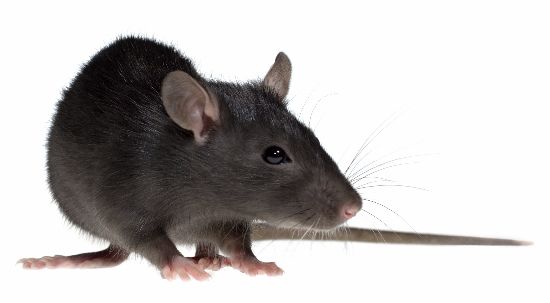by Larry
October, 2015Rats!A pair of brown (or Norway) rats can become 200 in a year, assuming most remain alive for 12 months. Even if we take into account a 75% a year death rate, within five years there could theoretically be a million or more progeny from a single breeding pair. Since rats can thrive on our food and in our environments, they tend to go where we do. For us to eradicate them, we might need to made conditions extremely unhealthy for ourselves as well. It is best then to find ways to live with them. Rats are thought to have become linked with our kind thousands of years ago when we first began to store and transport food. Their involvement with us had aspects of both boon and bane. Rodent infested granaries may have led to our first domesticated relations with cats and dogs, the felines and canines initially attracted by large numbers of easy prey.
Rats are sometimes treated as pets, can be taught to do tricks in carnivals, help provide other entertainment, such as betting on which dogs are the best ratters, aid in medical and psychological research, are eaten in certain cultures as a delicacy considered as delicious as fried chicken, can be educated to do better than other critters at clearing minefields, make an excellent diet for pet ball pythons, can also sniff samples to detect tuberculosis far more efficiently than humans can check for the disease, can carry messages in wartime or even lifesaving food and drink to people caught underground, show empathy and so help one another out, provide essential nutrition for many other species, are easy maintenance service animals for disabled kids, can aid people with the wiring of buildings for internet access, and are more efficient helpers than dogs for sniffing out gunshot residue when this skill is required for police work. On the other hand, rats today still definitely have their downsides. They may have an unjustified bad rap as the main plague carriers. However, they do spread deadly diseases to our species, for example, viral hemorrhagic fever, Weil's disease, and Q fever. Rats are destructive and do a lot of damage. They eat vast quantities of otherwise human food stocks. They also create a lot of wear and tear on our structures, including making holes in walls, siding, foundations, and floors, gnawing through electrical insulation, etc. Their droppings and urine smell. They endanger pets. They may eat bulbs and other vegetable matter in our gardens and dig tunnels in our yards. A rat infestation in a home can cost hundreds of dollars for eradication, cleaning, and repairs. They sometimes bite humans, even babies who cannot escape from their sinister attentions. Reproducing faster and being more biologically adaptable than humans, though, rats may be around long after we have departed the scene. If at a point in the future we become extinct, rats, already social, cooperative, and clever, may in one form or another be there to take up the slack. Just as we evidently developed from little vole- or rat-like insectivores that were around in the waning days of the dinosaurs, over millions of generations a species of rodent alive today may evolve that is more intelligent, larger, and has a greater life expectancy than current forms. It could be a good candidate for the next type of mammal to dominate the planet. |
